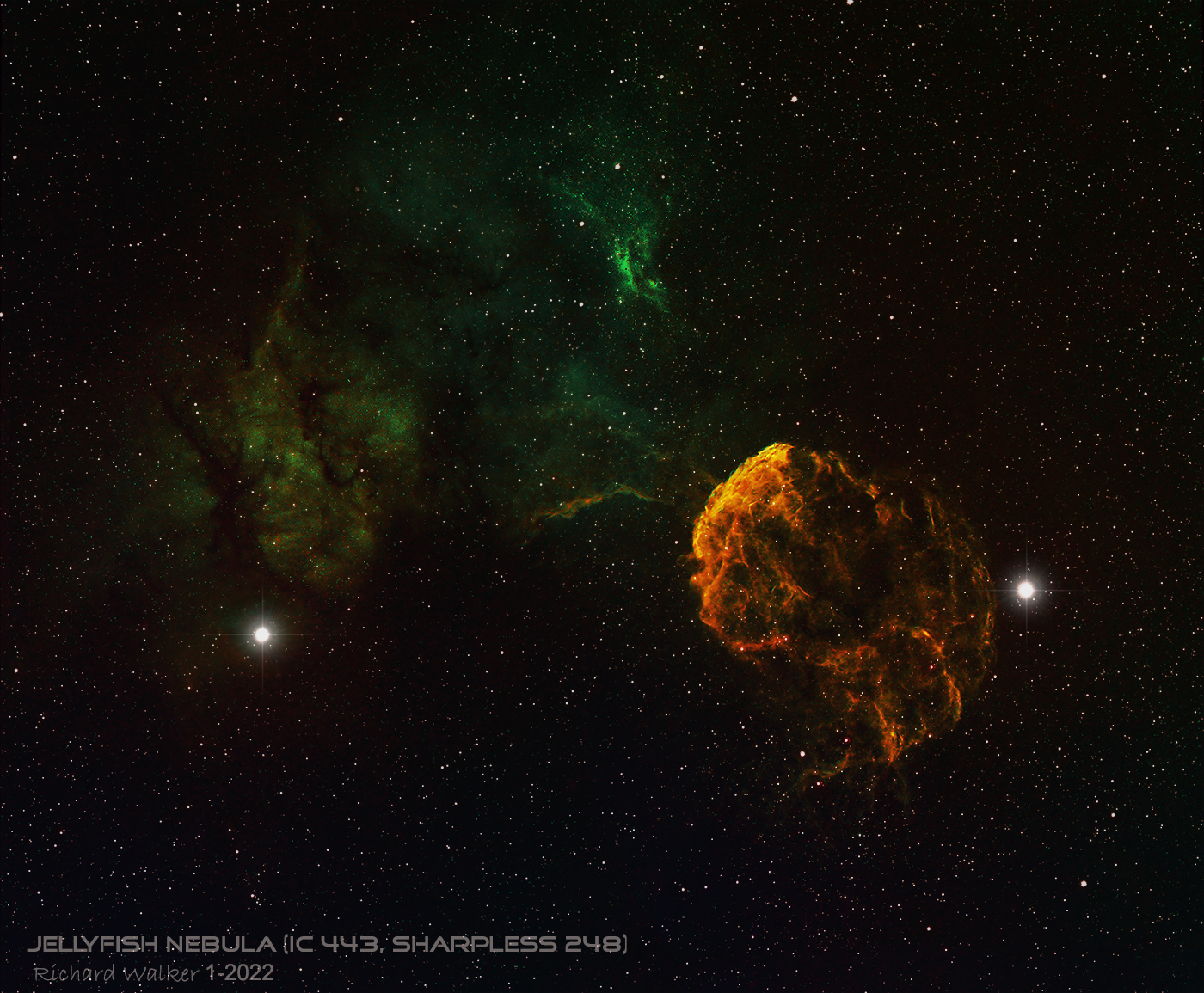

Imaged by Richard Walker (Dakota Starry Nights / YouTube), member of Black Hills Astronomical Society, Rapid City, SD - 2022
The Jellyfish Nebula (IC 443, Sharpless 248) is a supernova remnant located in the constellation Gemini. It lies at an approximate distance of 5,000 light years from Earth. The nebula can be found between the stars Mu (lower right) and Eta Geminorum (lower left), at the foot of one of the celestial Twins just east of Propus. The diffuse emission from S249 (north), and the G189.6+3.3 partial shell (center) are also visible in this two panel mosaic wide field image.
G189.6+3.3 (center) was once believed to be part of the Jellyfish Nebula, but it is now known to be older, with an estimated age of about 100,000 years. This larger shell is part of a different supernova remnant. Apparently stars like to blow their tops in this part of the sky.
The supernova that created the Jellyfish Nebula occurred in the Milky Way between 3,000 and 30,000 years ago. The supernova also produced a neutron star, CXOU J061705.3+222127. The presence of the neutron star and the nebula’s location in a star forming region indicate that the remnant was created by a Type II supernova, one triggered by a rapid collapse of a star with a mass at least 8 times that of the Sun. The neutron star is moving away from the site at about 800,000 km/h.
IC 443 is one of the most studied supernova remnants in the sky. The remnant has evolved in the complex environment of the molecular cloud in which the progenitor star was still embedded when it ended its life. The interaction with the cloud has affected the nebula’s morphology. In the southeastern portion of the nebula, the molecular cloud is very dense and clumpy, and the nebula’s gas appears ring-like, while the northeastern part of the nebula is interacting with a wall of neutral hydrogen, a considerably less dense environment that allows the shock to travel at a much higher velocity. The nebula’s expansion to the west is exaggerated, while the expansion to the east is experiencing a compression effect.
IC 443 occupies an area of 50 arcminutes, appearing larger than the full Moon, and has a spatial diameter of about 70 light years, or 20 parsecs.
Image
Technical Details:
Two panel wide field image mosaic
Total integration 6.45hrs per panel.
Hubble palette: SII,Ha,OIII / Baader CMOS-Optimized Narrowband Filters
Cam: QHY268M
Scope: TS-Optics TSQ-80APO 80mm f/6.8 Quintuplet Apo with field flattener
Acquisition software: NINA
Processed in Photoshop CS6 and Nebulosity 4.0